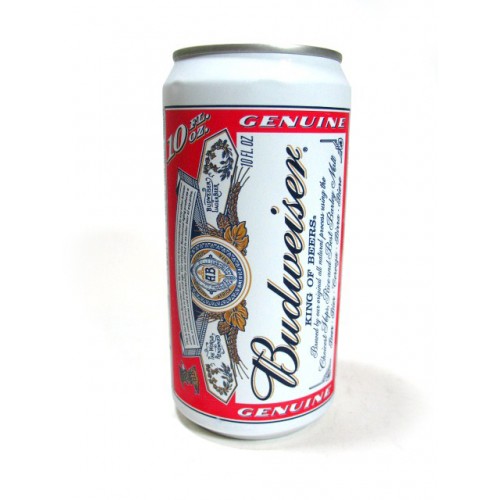Why Marylanders Pay More for a Little Less Beer

Pictured above is a can of Budweiser beer — standard looking, except if you look closely at the upper-left corner. Bud typically comes in twelve-ounce cans; this one, quite clearly, is only ten ounces. And yes, you can buy one — but only in Maryland and a few other select locations.
And to drink it, people pay a premium. Well, they pay the same amount as the 12-ounce variety, but they get less beer in return.
In 1919, the United States banned the production, sale, and transport of alcoholic beverages, starting a period now known as Prohibition. That proved unpopular, to say the least, and in 1933, Prohibition came to a halt. Breweries sprang up in local areas and by the 1950s, Maryland had a handful of such breweries making local favorites.
For Budweiser, which had its eyes on a nationwide market, this proved to be a problem. For various reasons — transportation likely being a large one — Bud simply couldn’t compete against the local Maryland beers on price. So Budweiser went the opposite direction — it claimed to be a better tasting product. (Really.) In a curious twist which will seem backward to any modern-day beer connoisseur, Bud decided to position its product as an option for the discerning beer drinker. As the Washington Post explains, “[the 10-ounce can] was the same price as a 12-ounce can of the Baltimore beers but considered more of a premium lager.”
Through this “premium” option, Budweiser was able to get a foothold in the Maryland market — but it came with a catch. For the decades since, many Marylanders have continued to demand the 10-ounce offering. In 1996, for example, the proprietor of one (now closed bar) told the Baltimore Sun that he “[doesn’t] even carry 12-ounce cans” as “they don’t sell.” And that’s not because the 10-ounce cans are cheaper. In 2006, NPR’s All Things Considered paid a visit to southern Maryland, finding that the beer-drinking culture there treats the size of the container — and not the liquid inside — as a premium worth paying for:
But just because it’s a smaller can doesn’t mean it has a smaller price tag: The 10-ounce drinkers often pay a 12-ounce price. Budweiser will offer a discount on the 12, but hardly ever on the 10. At one local restaurant, for example, both the 12- and the 10-ounce cost $2.75.
And that was true for at least a decade. The above-linked Baltimore Sun article quoted a beer distributor who echoed the sentiment: “There are times when the 12-ounce can is cheaper than the 10-ounce, but our local people won’t switch.” Per the Maryland bar owner, people think the beer flowing from the larger can “[doesn’t] even taste as good.”
But the allure of the 10-ouncer may be coming to an end. Until recently, the 10-ounce cans were the same height as their 12-ounce cousins, but a little bit thinner. That changed in 2012, when — again per the Washington Post — Budweiser decided to use the extra capacity on their 10-ounce lines to make something called the Bud Light Lime-a-Rita, “a margarita-flavored malt beverage.” That had previously come only in 8-ounce cans — cans which were a little narrower than the 10-ounce Buds above. Budweiser switched the 10-ounce beer to the same width can as the Lime-a-Rita, and Marylanders noticed something was amiss — their beer koozies didn’t fit snugly around their favorite beers anymore.
Whether that’s enough to get people to switch to a larger can is, at best, unclear. But if they do, they’ll be getting more beer for their buck.
Bonus fact: This isn’t the only example of Budweiser using smaller cans to reduce costs. In 2011, Budweiser created a new bowtie-shaped logo. To further emphasize that, in 2013, they decided to introduce a new, bowtie-shaped can. As TIME explains (and there’s a picture of the can at that link), the 12-ounce can got a little bit of a tuck in the middle section, and as part of that procedure, turned into an 11.3-ounce can. Same amount of money, but a little less beer. To make the switch even less detectable, Budweiser, again per TIME, used more aluminum, hoping to mask the lighter load.
From the Archives: Mister Beer Belly: The man who brewed his own beer — in his stomach.
Related: A beer can you can take to the bank.
